This post is old, probably from 2007, I forget exactly, and the original is no longer on the web, so I can't snag the date from there.I am an independent scholar with a wide variety of interests. I have many projects in process or merely in contemplation, more than I can possible complete. Graffiti was not on my intellectual agenda when, in October of 2006, I was walking about my Jersey City neighborhood and noticed things and stuff that prompted me to take pictures. Not remarkable or beautiful things, just ordinary things on the streets. So I got out my Canon point-and-shoot and began walking the streets taking pictures.
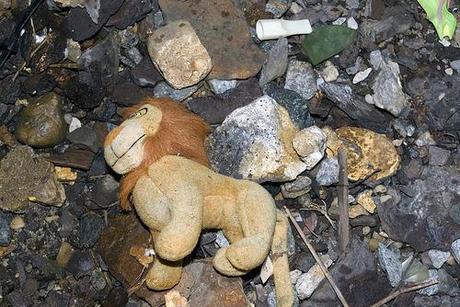
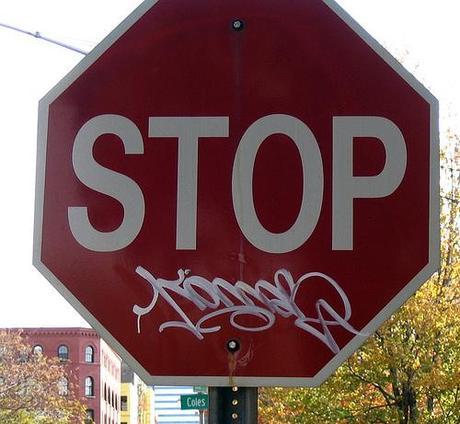
One day I was beneath a long ramp that carried US routes 1 and 9 down from the Jersey Heights and into the Holland Tunnel. At this point the roadway is supported by rows of squat cylindrical columns of reinforced concrete. When I looked down the rows toward the Tunnel I saw shopping carts, stacked mattresses, and furniture, all in order. It was an odd and unexpected sight. What was going on? I approached to investigate and, more likely than note, to take pictures.
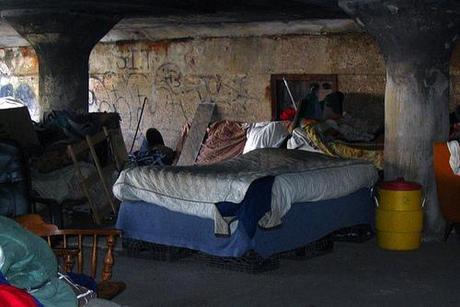
The only reason I did not immediately conclude that someone was living here is that that did not make sense. Here? Underneath one of the most traveled roadways on the East Coast, funneling tens of thousands of people into New York City every day of the year? In full view of an office-building parking lot? This is not an enclosed area; there is something of a “roof” overhead, the highway, but that's it. No, it did not make sense that people lived here. But if no one lived here, the alternative made even less sense, that someone went to a great deal of trouble to arrange trash in such an orderly fashion. By the time I had taken my third or fourth photograph I had concluded that I must be in someone's home. I felt embarrassed, taking photographs of someone's home without their knowledge or permission.
Over the next few days I thought about that place and the people who lived there. Yes, I thought the obvious thoughts about such poverty in the world's wealthiest nation. But those were not new thoughts; I'd been having such thoughts all my adult life.
The thoughts I now had were a bit more subtle: First, I was impressed at how orderly the place was. The residents may have been homeless, but they kept this place relatively neat and orderly. Beyond that I wondered about the informal social arrangements that make it possible for people to thus “squat” on public land in a densely populated area. The police certainly knew of this urban homestead and no doubt could have arrested the settlers on any number of minor charges. As long as they weren't causing any obvious trouble, either to others or themselves, however, bringing formal charges makes no sense. Once they're in “the system” they cost taxpayer's money without any obvious benefit to anyone, including them. There's a Salvation Army facility a few blocks away, and a homeless shelter a few more blocks away. No doubt these homesteaders knew of these facilities, and others as well, and, reciprocally, that they were known in the public and private social services community of Jersey City.
What particularly struck me is that things seemed to keep in such good order in that spot - and others like it - day after day, week after week, month after month. These homesteaders lived outside the law, and yet seemed to keep a law among themselves, enough to keep this makeshift facility intact. I know almost nothing about the people who live there - though, as it happened, a few months later I paid one of them $10 to help me with my car after someone had sideswiped it during the night - but I'm pretty sure that they aren't the only homeless people in the area. Those who live there obviously have reached some accommodation with those who don't.
Thus ordered life goes on, outside the law, but in the same territory otherwise inhabited by those of us who can afford to own or rent standard accommodations. Two very different communities inhabit the same space, walk the same streets, only marginally known to one another.
In some measure, graffiti is like that. It goes on outside the law and proceeds according to informal arrangements among the artists - their informal social contract. To be sure almost all of it is illegal, done on public or private property without permission, and contention between artists and authorities is part of the life. But to the considerable extent that the artists keep from getting caught, the laws they obey are the laws that constitute their informal world. Their graffs are both the visible signs of that world and its raison d'être. Those graffs are central to one community, but marginal intrusions to another.
It is thus not surprising, that, as an improvised shelter prompted my interest in urban signs, in graffs, so my pursuit of graffiti led me to other improvised shelters. This is a sleeping hut behind the remains of the old Van Leer chocolate factory:
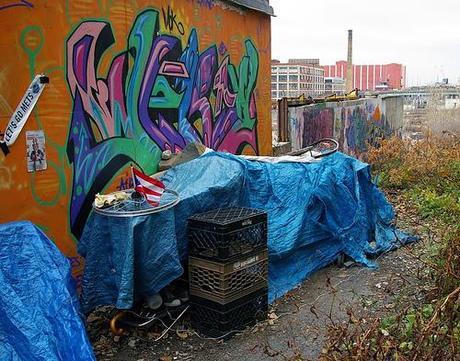
And this is the bicycle of the man who slept there:
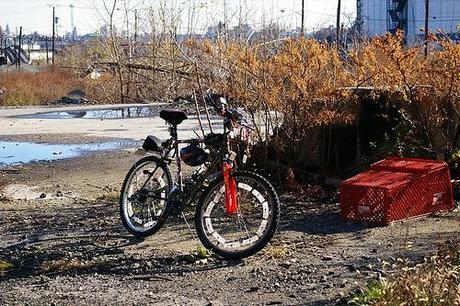
On the face of it, he's a Mets fan:

I had a brief chat with him. He wanted to know whether I was taking photographs for myself or for some publication. He's the one who told me that this building used to be a chocolate factory.
This couch is at a different site, about a quarter mile away:
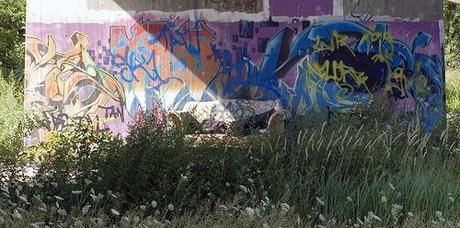
I've seen a man sleeping on it several times, though whether or not it's the same may as the one in that photo, I do not know. This chair is only 20 yards away:
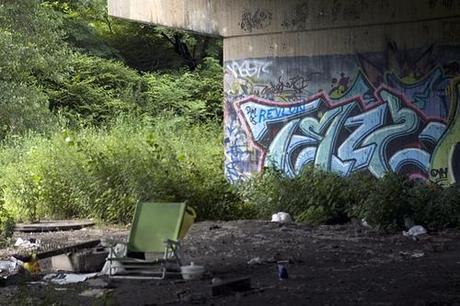
The piece behind the chair is by Tenz, of Brooklyn's DYM crew, two rivers to the East.
There is an obvious reason why grafiti writers share space with the homeless: they can. For the most part, no one with power and influence cares about what happens on or near these buildings and structures. No one conducts business there, no tax-payers live there. The graffiti artists thus have time to paint complex pieces without fear of being busted by the police and they have reasonable expectations that a piece will live for at least awhile before it's “buffed” by the City or gone over by other artists.
This affinity for marginal land is hardly unique to graffiti writers. I suspect, in fact, that it is quite common, but I'll offer only one other example, one I find particularly interesting, that of pre-modern Japan. In her recent Bonds of Civility: Aesthetic Networks and the Political Origins of Japanese Culture, Eiko Ikegami points out that much aesthetic activity in pre-modern Japan at interstitial places such as graveyards, riverbanks, bridges, trading posts, and market places. These places were mu'en, meaning roughly “no relation.” They didn't have a fixed space in the social order; that's what made them suitable for dance, music, theatre, acrobatics, and poetry circles.
The people who participated in those activities did not come from the same social spheres and so they needed to meet in spaces which were not assigned to specific social spheres. Samurai, merchants, farmers, and others meet in these marginal places as equals. Over the centuries, these informal institutions forged a civil society “that generated an image of aesthetic Japan as if it had been a natural description of the geographical identity called Japan” (p. 375). In the late nineteenth century, this identity coalesced around the figure of the emperor when the nation in general, and the shogunate in particular, was forced to adapt to Western imperialism.
Is the graffiti tradition one facet of a similar process happening in the contemporary world, but on an international scale? Graffiti now international in scope, as are African-American musical styles and Asian martial arts styles. The world of graffiti is everywhere marginal, having no fixed place in the local institutional order. Yes, graffiti styles have certainly been appropriated and legitimized in various ways, some graffiti works have moved to canvas and into museums, but there is a large and activity community of writers that resists assimilation into existing institutions. This group is international, and they trade photographs and ideas through the internet, a practice you can verify by doing an internet search on the term “graffiti.”
Does this “Graffiti Land” contain the seeds of a new transnational civilization? That's ultimately what interests me.

